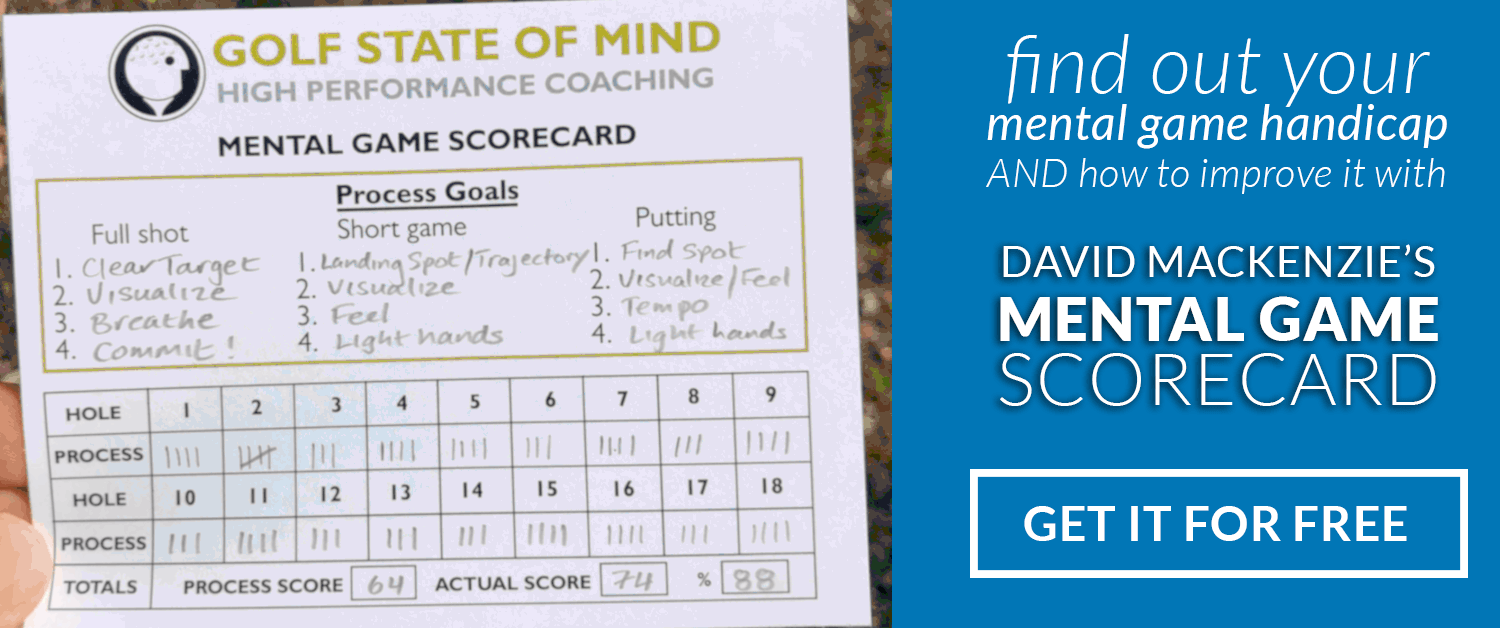
The Amazing Power Of Goal Setting In Golf
“Goals are the fuel in the furnace of achievement”. – Brian Tracy
Where will your game be at the end of the New Year? Why is it important to think about this now? The best players and most successful people I know set very specific goals each year. This article will show you why you need goals and how to determine what they should be to drive your game forward to new highs.
Why is goal setting important?
1. Without direction it’s difficult to know where you’re going
When you set out to practice each day, how do you know what to work on? Are you sure you’re spending your time wisely? Effective goal setting means that you are always working on the things that will help you get to where you ultimately want.
2. Goal setting means that you push yourself to your limits to achieve them
If you’ve set goals that are just beyond your current reach, (i.e. they are realistic but not comfortably achieved) you’ll have to put in the right amount of effort to make sure you get there. If you choose a goal that is unrealistic, you can get discouraged and feel too much pressure to achieve it in the time you’ve set which can stall your improvement.
3. Goal setting creates a mood within to help you achieve what you are visualizing
Goal setting with imagery gets into the subconscious mind, which if reinforced regularly can really help you get there.
How do we set goals?
“A journey of a thousand miles begins with a single step.” – Lao-tzu, Chinese Philosopher
1. Identify your long term goal (that is your where you want to be with your game by the end of the year)
2. Break your long term goals into smaller ones that will help you get to the long term (start as small as the first 3 months)
Setting the goal of knocking 10 shots off your handicap in 2015 sounds like a big ask. But taking 1 shot per month off your handicap or 2.5 shots per quarter, doesn’t sound as hard does it?
The other reason for setting short term goals is focus. For example, if you’re goal is to break 80 by the end of the year, you’ll first need to determine where the shots that currently take you over 80 are lost. Is it driving, long irons, short irons, short game or putting? And are these shots dropped due to physical, mental or emotional weaknesses in your game? Choose the area that will have the biggest impact on your scores. If you’ve kept good stats (both physical and mental) using your mental game scorecard and a program such as www.egolfplan.com, you’ll know what this first 3-month goal should be.
3. Make them things you DO want, not DON’T want
E.g. If you feel like you would benefit from putting a lid on your bad temper on the golf course, your goal should be “I’m going to be more accepting of of my golf shots” as opposed to “I’m going to be less frustrated and angry on the golf course”.
4. Write them down on something such as a flash card and put it on the fridge or somewhere you will see it regularly.
5. Goals should be in the present tense.
I’ll explain why later, but instead of saying that “you want to be…”, write them as “I am…”
Goals have to S.M.A.R.T.
Specific
Be as specific as you can be about what you want to achieve e.g.
“I am an 8 handicap” (one year)
“I am the club champion” (one-year)
“My putting average is 29” (3 month short-term), which is better than “lower my putts per round”.
“My fairways hit is 70%”, (3 month short-term), which is better than “hit more fairways”.
Measurable
With both your long and short-term goals, you should be able measure where you are in relation to it. If you feel like you are seeing results and getting closer to your goals then you’ll get even more drive. Alternatively if you’re not making the progress you would like, you’ll need to adjust your plan.
I’d recommend a regular weekly check-in for your short-term goals.
Attainable
Is your goal realistic considering your current ability and other priorities and time commitments? Is it definitely something you think is achievable? E.g. if your goal is to consistently break 80 this year and you’re currently a 28 handicap with a full time job, you might want to rethink. A more attainable goal would be to break 90 this year, and 80 next year.
Relevant
Is this something you really want to do? Is it going to help you get to where you ultimately want to be? An example of an irrelevant goal might be to improve your driving when your fairways hit number is 70% and your putting average is 36 putts per round. A goal relating your putting is much more relevant to improving your overall performance. You need to be choosing a goal that is going to have the most impact on you achieving your long-term goal and spending 70% of your time working on that for a fixed period of time.
Timely
There needs to be a sense of urgency, or your actions to make the goal a reality will undoubtedly be delayed. For example, making an average of 29 putts per round your target for 12 weeks time. Try to set yourself practice times at the beginning of each week so you know exactly how many hours you’ll get to spend. E.g. I’m going to practice 3 times, on Monday, Wednesday and Thursday straight after work and I’ll be working 70% on my short game”.
Create a list of your goals
Firstly create a (written) list of your long and short term goals. The short-term goals might be 2 or 3 things you want to improve in the next 3-6 months that take you closer to your long-term goals.
Now verbalize them, but do so in the present tense. The subconscious mind operates in the NOW, so verbalize in the present tense – this makes it more powerful than saying “I will…” talking about the future, so instead say “I am…”
Create an action list
Once you’ve decided on your goal and the time it’s going take to do it, you’ll need to create an action list of around 5 things you’re going to do during your practice to achieve your short-term goal.
Have accountability
Tell a few people close you about your goals. This could be a parent, a team mate, friend or coach. The idea here is that it will help to have accountability to more people than just yourself. If you know that others are tracking your progress, it’ll spur you on. Organize regular check-ins to tell others where you are in relation to your goal.
The Importance of Imagery In Goal Setting
“In order to be successful you have to develop your inner vision. If you have no vision for the future, you are destined to fail in the long run.” – Greg Norman
As you know, imagery in very important in playing an individual golf shot – the more you can remind yourself of what you want by consciously thinking about it, the more you ingrain it in your subconscious mind to help you move towards it.
This is called the law of attraction and it’s been proven to work in many cases. But in order to program your subconscious, you need to speak in the language it understands – pictures. When you create the image, the subconscious creates the feeling and the belief.
Put together a vision board
For your long-term goals, it’s important that you have a strong visual image to get it deep into your subconscious. Tiger had a poster of Jack Nicklaus on his wall to remind him of his life goal, which is to beat Jack’s record of 18 majors. That image would have been a big motivator for the success he’s already achieved.
A vision board is a good way to do this. You can create this using a large piece of paper or cork board and pinning pictures which remind you of your goals and trigger that feeling of success.
These are just a few of the techniques that I know have worked for Tour players and elite amateurs, so I highly recommend you start this New Year off in this way.
If you’d like to arrange a personal session with me to discuss your goals, mental game improvement and practice plans, please email me david@golfstateofmind.com




